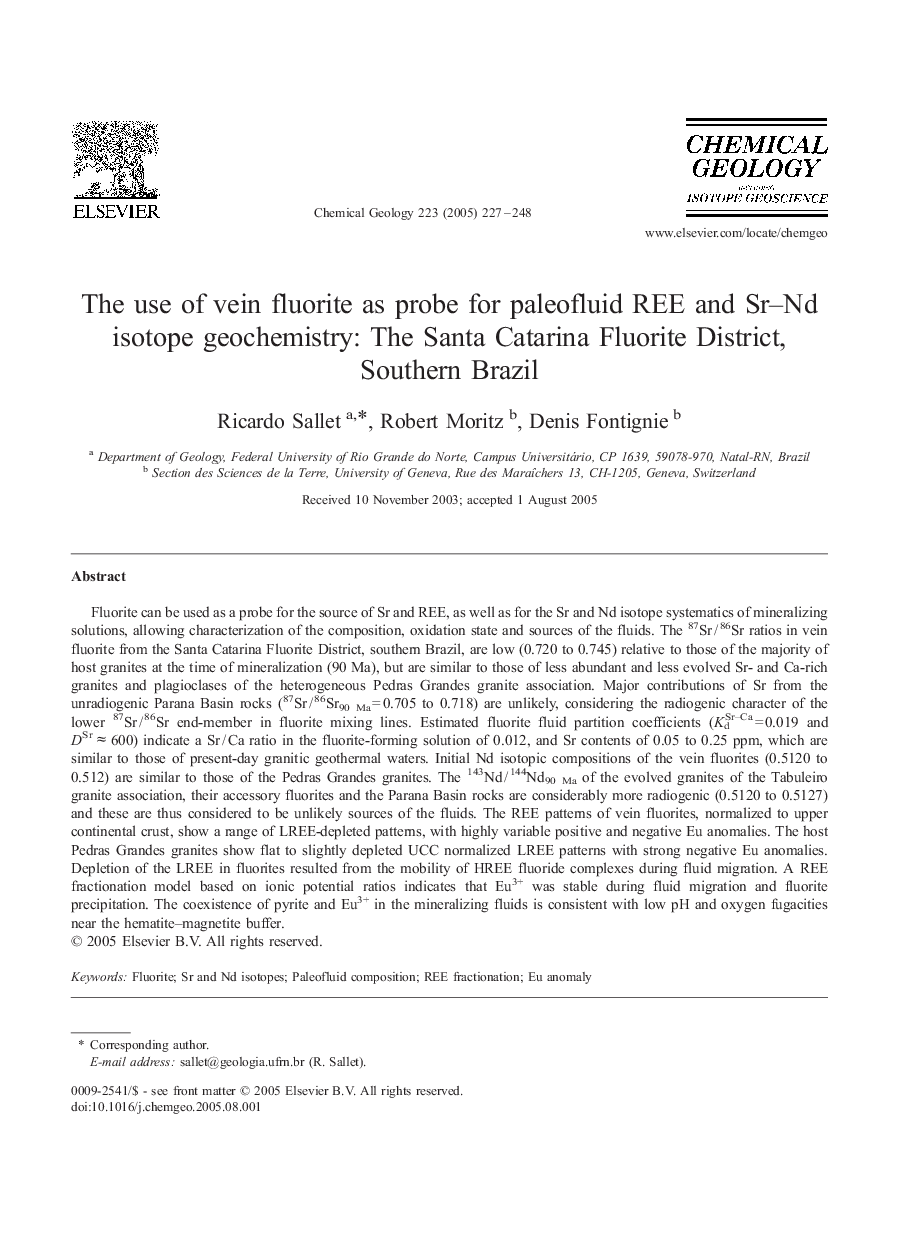| Article ID | Journal | Published Year | Pages | File Type |
|---|---|---|---|---|
| 9529078 | Chemical Geology | 2005 | 22 Pages |
Abstract
Fluorite can be used as a probe for the source of Sr and REE, as well as for the Sr and Nd isotope systematics of mineralizing solutions, allowing characterization of the composition, oxidation state and sources of the fluids. The 87Sr / 86Sr ratios in vein fluorite from the Santa Catarina Fluorite District, southern Brazil, are low (0.720 to 0.745) relative to those of the majority of host granites at the time of mineralization (90 Ma), but are similar to those of less abundant and less evolved Sr- and Ca-rich granites and plagioclases of the heterogeneous Pedras Grandes granite association. Major contributions of Sr from the unradiogenic Parana Basin rocks (87Sr / 86Sr90 Ma = 0.705 to 0.718) are unlikely, considering the radiogenic character of the lower 87Sr / 86Sr end-member in fluorite mixing lines. Estimated fluorite fluid partition coefficients (KdSr-Ca = 0.019 and DSr â 600) indicate a Sr / Ca ratio in the fluorite-forming solution of 0.012, and Sr contents of 0.05 to 0.25 ppm, which are similar to those of present-day granitic geothermal waters. Initial Nd isotopic compositions of the vein fluorites (0.5120 to 0.512) are similar to those of the Pedras Grandes granites. The 143Nd / 144Nd90 Ma of the evolved granites of the Tabuleiro granite association, their accessory fluorites and the Parana Basin rocks are considerably more radiogenic (0.5120 to 0.5127) and these are thus considered to be unlikely sources of the fluids. The REE patterns of vein fluorites, normalized to upper continental crust, show a range of LREE-depleted patterns, with highly variable positive and negative Eu anomalies. The host Pedras Grandes granites show flat to slightly depleted UCC normalized LREE patterns with strong negative Eu anomalies. Depletion of the LREE in fluorites resulted from the mobility of HREE fluoride complexes during fluid migration. A REE fractionation model based on ionic potential ratios indicates that Eu3+ was stable during fluid migration and fluorite precipitation. The coexistence of pyrite and Eu3+ in the mineralizing fluids is consistent with low pH and oxygen fugacities near the hematite-magnetite buffer.
Related Topics
Physical Sciences and Engineering
Earth and Planetary Sciences
Geochemistry and Petrology
Authors
Ricardo Sallet, Robert Moritz, Denis Fontignie,
